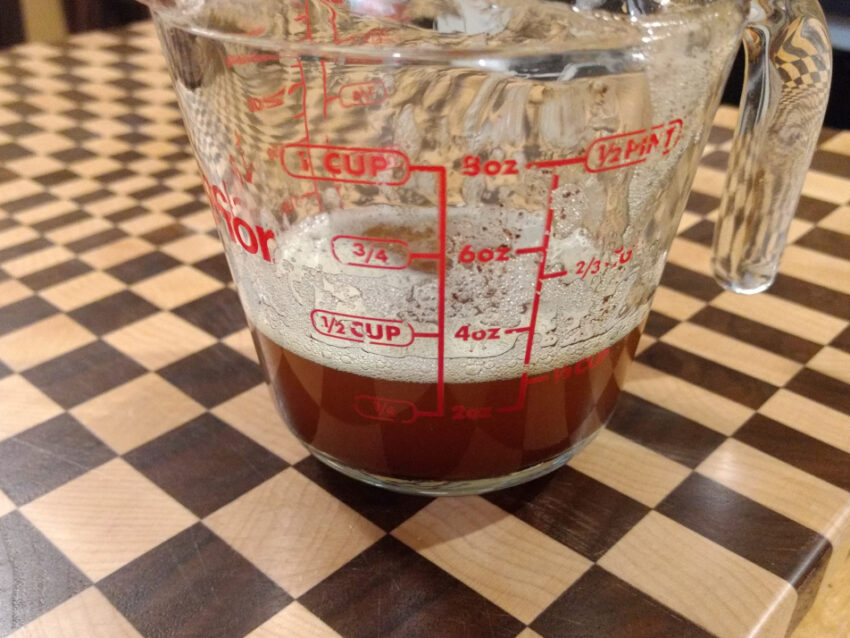If you’ve spend much time perusing recipes books, food magazines, or blogs, you’ve no doubt heard brown butter mentioned. Brown butter is one of those magical flavors that improves nearly everything. Here’s how it’s made and some facts about it.
How to Make It
Take your butter and place it in a pan over medium heat. It will pop and sizzle a bit while the water cooks off, so I recommend a small saucepan rather than a frying pan, or using a splatter guard like you’d use for deep frying.
As the butter cooks, the solids will fall out to the bottom of the pan, where they will brown, so don’t stir it. However, you can swirl it in the pan periodically to help it brown evenly–this is also a great way to check the color if it gets too bubbly. When it gets to a nice nutty brown color, remove from the heat immediately and pour into a heat-proof container.
How to judge the color? Well, depending on the depth of the liquid in your pan, it may appear somewhat darker or lighter. So look for the solids at the bottom to be nice and brown, but not blackened (see the pictures below)!
Be sure to use a heat-proof spatula to scrape out any remaining solids and get every last drop of that buttery goodness.
Important Notes
Do not walk away while cooking the butter, especially once the color starts to change. It goes from lightly brown to perfect to burned quite quickly.
If you’re substituting brown butter for regular butter or oil in a recipe, it is important to recognize that the process of browning removes much or all of the water contained in butter. The total volume will be reduced, and the moisture content will be less than that of regular butter. Adjust accordingly.
Some recipes suggest browning butter at a higher heat; I choose not to because it splatters a lot that way.




5 thoughts on “Brown butter”